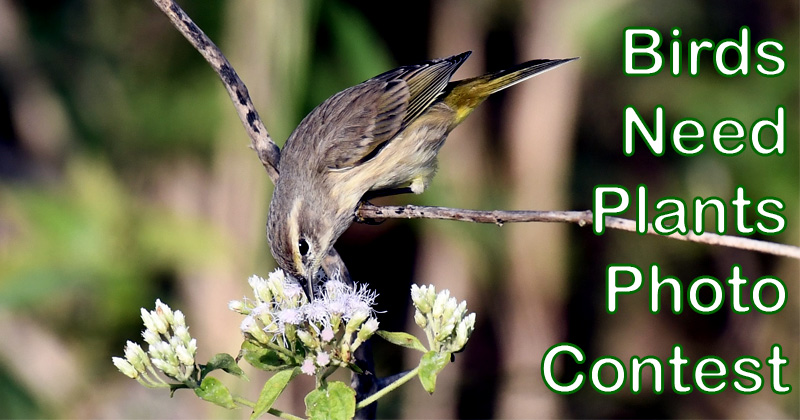
Take time to smell the flowers
by Juanita Baker, Ph.D.
What a subtle, delicate beauty ‘smelling’ the Blue Mistflower Conoclinium coelestinum! Inserting its sharp warbler bill amongst the flowers, this Palm Warbler aimed to capture the many insects that are drawn to flowering plants. Focused on its next meal, more often than other warble r species, it forages on the ground or in low plants and bushes seeking insects primarily, yet here in Florida, may also eat seeds and berries. Commonly seen, it is immediately identified when it starts pumping its tail. Unlike many warbler species, both genders display similar coloration.
Palm Warblers have evolved into two separate, identifiable subspecies, but uniquely both visit Florida! Studies of interactions by the two subspecies are needed. It is one of the least-studied North American wood warblers, especially on its breeding grounds. This “Western” Palm Warbler subspecies (photo taken in December 2020 near Yeehaw Junction, in Indian River County) displays the somber colors of winter (with no yellow belly or eyebrow). Many individuals occur or pass through along the Atlantic Coast of Florida while others winter in the West Indian islands and the Caribbean coast of the Yucatan Peninsula. Beginning in March when ready to migrate North, they begin to molt, transforming to their chestnut-colored crown, and brighter yellow throat feathers (yet retaining their white bellies), indicating readiness for breeding thus visibly attractive to a mate. Males often have more intense, solid colors than females.
Western subspecies leave by the end of May. Heading north and flying by night, they cross Florida up the Mississippi valley to the very northern edges of Minnesota to Michigan, from Western Ontario to far north to the Mackenzie in the Northwest Territories. Their display, courtship and nesting take place after their long migration north. Yet, on their return after re-entering the US, some go along the California coast, others before coming to the Appalachian Mountains, cross over to the Atlantic Coast to winter in Florida and the West Indies.
The “Yellow” (or Eastern) Palm Warbler subspecies, breeding from eastern Ontario east to southern Labrador and Newfoundland, has a solid, bright yellow throat, breast to undertail yellow coverts (feather coverings). When they migrate south in the fall after nesting, they also follow the Atlantic Coast but use the Appalachian Mountains as their guide south, thus ending up in the Gulf region, and more likely, come down the Western Coast of Florida. Though both subspecies have been seen in our county, the “Yellow” Palm Warbler occurs less frequently.

